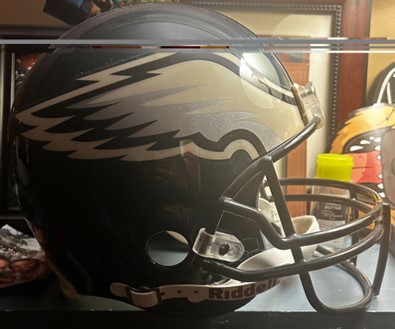Football has always been celebrated for its teamwork, passion, and determination. However, the growing awareness of chronic traumatic encephalopathy (CTE) has raised serious questions about the long-term risks associated with the sport. The evidence linking repeated head trauma to this devastating brain disease is hard to ignore. Boston University research revealed that 345 out of 376 former NFL players studied had CTE—more than 90%. Additionally, a Harvard study found that one-third of former NFL players believe they have symptoms of the disease. This rising concern has forced many to confront the darker side of football.
Some argue that the connection between football and CTE is not fully proven, pointing out that the disease can only be diagnosed after death. While not every player develops symptoms, the overwhelming number of cases among former players suggests that the risks are very real. Dominique Lomax, the daughter of an NFL player, described noticing odd behavior in her father and uncles. “Sometimes they would act quirky, and everyone would laugh. Now, it seems clear that there was something more serious going on.” Similarly, Pamela Browner, whose late husband also played in the NFL, shared stories about his struggles with memory loss. “He would start cleaning the house, but then forget what he was doing and sit down to watch TV.” These personal accounts highlight the devastating impact CTE can have on families.
The tragic case of Aaron Hernandez is one of the most well-known examples. Diagnosed with one of the most severe cases of CTE ever recorded in someone his age, Hernandez’s life spiraled into violence and ended in his death. His story demonstrates how repeated head trauma can lead to serious mental health issues and destructive behavior.
The conversation around CTE should focus on solutions. Critics who dismiss the connection between football and CTE because the research isn’t 100% conclusive are missing the point. Action is needed now. Advances in helmet technology show promise, but more investment and implementation are necessary. Stricter rules regarding tackling and player safety, especially in youth leagues, can also reduce head injuries. Education about the risks of concussions and early symptoms of CTE is essential for players, coaches, and families.
Mandatory baseline cognitive testing and regular neurological check-ups could help detect early signs of CTE. Former players who are struggling with symptoms need better support and resources. The NFL, with its significant financial power, has a responsibility to lead these efforts and set an example for lower levels of the sport.
Football’s place in society is undeniable, but the health and safety of players must come first. No athlete should have to sacrifice long-term well-being for the sport they love. With better technology, stricter rules, and comprehensive education, football can be made safer without losing its core values.
The risks are clear, but the solutions are within reach. It’s time for action.
Sources:
https://www.today.com/health/disease/aaron-hernandez-brain-cte-rcna171309
https://www.espn.com/nfl/story/_/id/39417850/how-fears-cte-football-exceeded-scientific-certainty
https://hms.harvard.edu/news/study-former-nfl-players-finds-1-3-believes-they-have-cte





